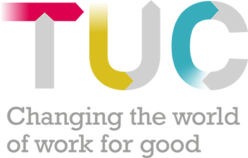Lots of us have had digital transformation thrust upon us by the coronavirus pandemic, having to switch up our time-honoured ways of working with little notice. Over the last few months, we have had to transition the TUC’s Executive Committee and General Council meetings online.
Using these meetings as a case study, we’ve learned a few things about how to support governance while going through (sudden, unexpected!) digital transformation.
Clarifying our aims
Before we started, we developed an internal discussion paper to clarify our aims. Our short-term aim was to engage with the Executive Committee about the coronavirus emergency, and to make sure conversations between committee members and senior officials were happening in a structured and accountable way. The longer-term requirement was to continue to fulfil the requirements of our core democratic and constitutional functions.
Start small
Rather than scheduling a full meeting, with a complex agenda and voting, we decided to hold an informal Executive Committee meeting with a short agenda and no formal decisions to take. This was so we could take things one step at a time and build up from there. A few weeks later, we were able to build on the success of the informal meeting to hold a TUC General Council meeting online, a larger meeting with a more complex agenda and documents.
Everything won’t go right first time – when we held the online General Council meeting, we discovered users on Mac products needed to troubleshoot their microphones to be able to speak. We only tested on PCs and hadn’t considered this could be a problem.
Later in the year, we plan to run all of our annual Congress decision making online, with weighted electronic voting to mirror the card votes we carry out at a physical event to take into account different union affiliation sizes.
This initial work should stand us in good stead for that increased level of complexity. It’s easier to go step-by-step, building confidence both internally and with external users, and ironing out any problems you encounter, than dive straight in.
Choosing a product
The products we used were Skype for Business (the product we already use for telephony at the TUC), and Sharepoint (our existing document storage and management tool).
There is something to be said for choosing a product that people are already familiar with! Where there is more than one product that might be suitable, it can be useful to set out a grid to compare strengths and weaknesses, like we did in this example on video conferencing.
A major advantage of cloud-based systems is that we were able to switch our operations from the office to online with very little friction. One of the points that had come out of the initial discussion paper (which had been written before lockdown) was that we didn’t want to have to rely on a member of staff to be in the office to run the meeting. Cloud-based systems offer an organisation more resilience.
Provide clear guidance and set expectations
This is a new scenario – some committee members had never used any type of video conferencing software before. It was important to provide clear guidance for how the meeting would work.
From the perspective of the chair of the meeting, we provided the President with a note of how the meeting would work, and did a trial run to make sure he felt comfortable with the technology.
You also mustn’t underestimate how much support people will need – in the week before the first online General Council meeting we did little else except support committee members with test calls and advice. Support is crucial not just for efficiency but also confidence and goodwill.
Etiquette
Something we learned that can make governance events go more smoothly is for the chair of the meeting to give some etiquette instructions at the start of the meeting – for instance, to keep remarks to less than three minutes, and to switch onto mute when not speaking.
Sometimes it’s a case of more haste less speed – the first time we tried to hold the General Council meeting online we tried to speed up the introduction by only identifying phone callers (those dialling in without video) and not the majority of video users, but in the end it was less confusing to go through a full register so everyone knew who was there.
Take advantage of opportunities to do things differently
You can’t assume a video conferencing platform can completely substitute for a face-to-face meeting. Some people find video calls very tiring. You also can’t be as aware of people’s gestures and eye contact, or have a quiet word to a neighbour. It would be difficult to concentrate in a three hour online meeting, so we reduced General Council meetings to around 90 minutes.
But there are some distinct advantages to video meetings. We have found that using the chat box to indicate to speak means people can say what topic they wish to speak on, allowing the chair to group responses and hold a more coherent debate. We’ve also found that participation is particularly good – because people don’t have to travel to meetings, we have had almost a full house at times. The lack of travel is also a benefit for anyone supporting a national committee that can tend to be London-centric, or meetings with lay officers that are at family-unfriendly times.
We’re not there yet, but there will be questions coming up about what happens when we can hold ‘offline’ meetings again, and how we keep the advantages we’ve found in online meetings going.
Photo TUC / Modern Records Centre, Warwick University: The TUC General Council meeting in 1938 – a format recognisable right up until lockdown.

